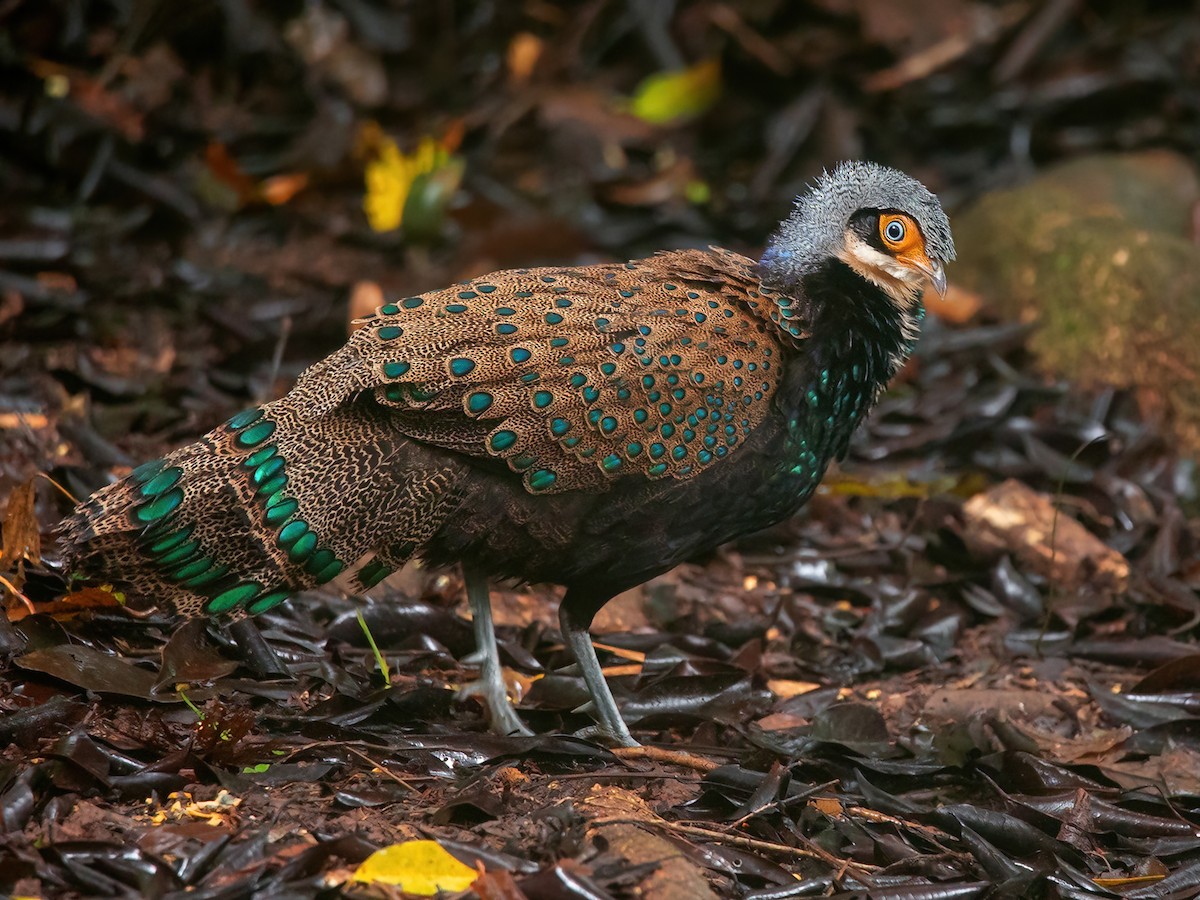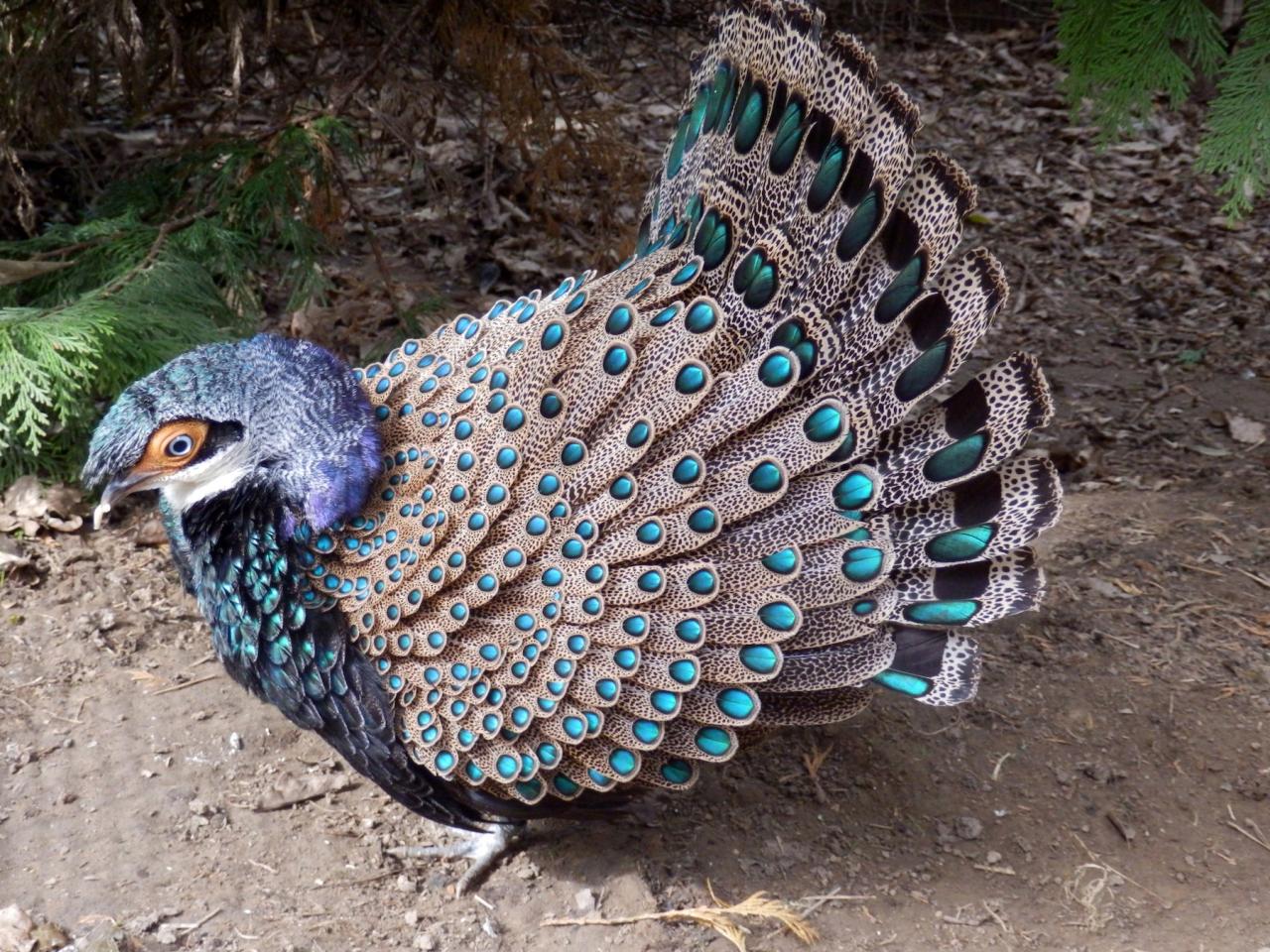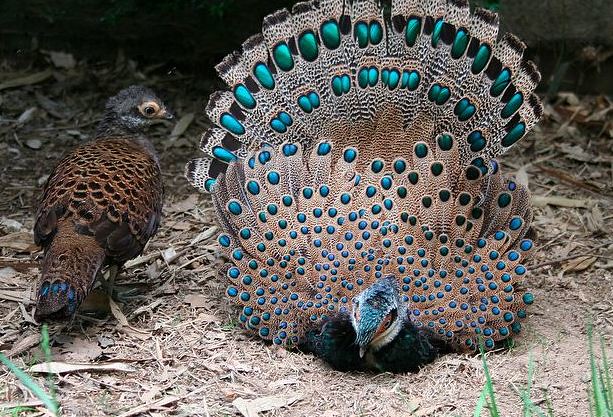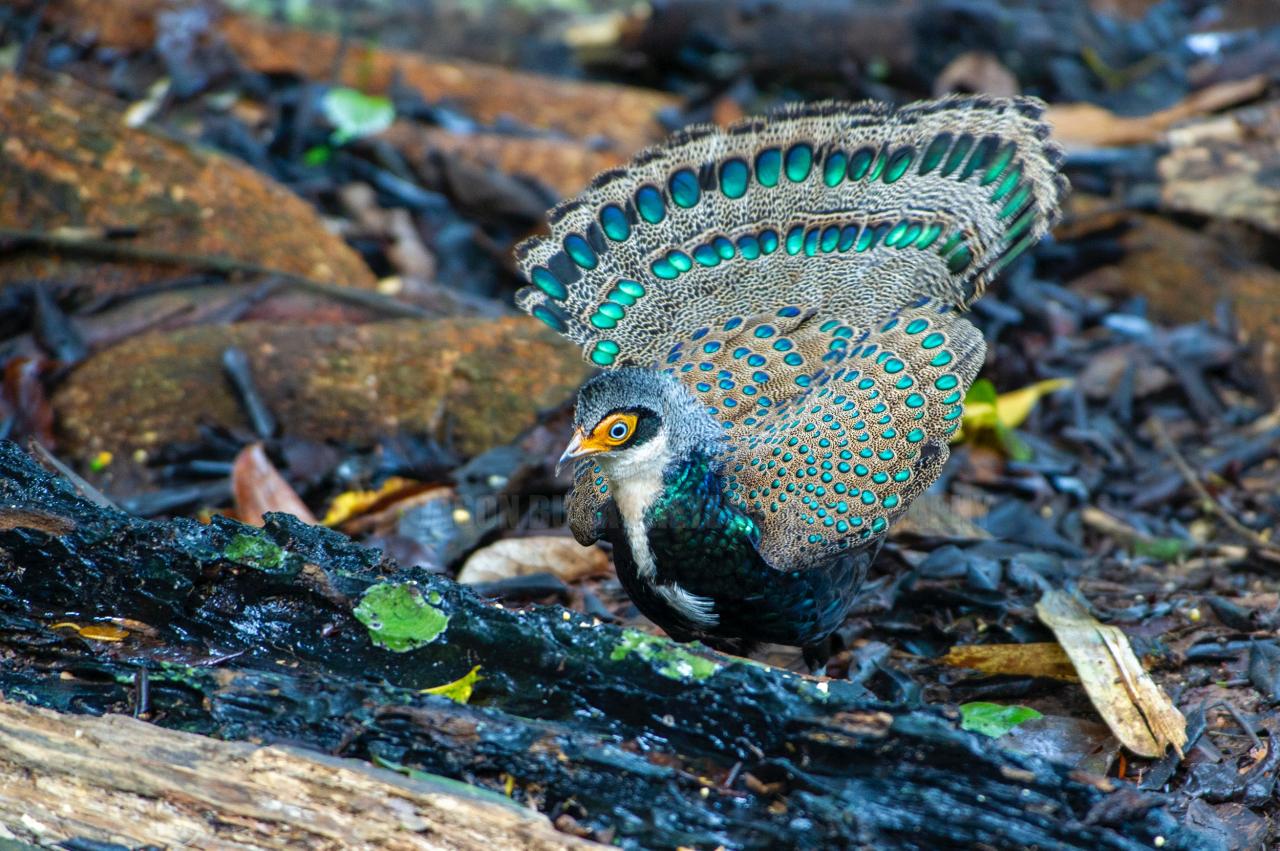The Borneo peacock pheasant (Polyplectron schleiermacheri) is a medium-sized pheasant. It is probably the rarest and certainly the least known of all peacock pheasants. This elusive bird is endemic to the lowland forests of Borneo.

Description: The pheasant is up to 50 cm long, reddish brown and black spotted, with an elongated crest and nape feathers, black underneath and bare red skin around the bluish iris. The sides of the breast are metallic blue-green and border the white throat and upper center of the breast. Its twenty-two tail feathers are decorated with large blue-green ocelli, which can be spread out into a fan shape for display. The female is smaller and duller brown than the male. It has brown irises and no dewclaws on its legs.

Taxonomy: Together with the phenotypically similar Malayan peacock pheasant and the Palawan peacock pheasant, it represents a basal group in its genus; Its appearance probably took place during the Pliocene. Little known, the Borneo peacock pheasant was long considered a species of the Malayan peacock pheasant, but the two species are well isolated geographically. The highly specialized plumage of the forechest and upper neck of male Bornean peacock-pheasants are quite distinctive. Females of the two species are more difficult to distinguish. The rectrices of the Bornean species are morphologically and patterned intermediate between the Palawan and Malayan peacock-pheasants.

Status and conservation: Due to continuing habitat changes, small population size and limited range, the Borneo peacock-pheasant is assessed as listed on the IUCN Red List of theatrical species. It is included in Appendix II of CITES.

Distribution and population: Polyplectron schleiermacheri is endemic to Borneo, where it is known from Sabah and Sarawak, Malaysia and Kalimantan, Indonesia. A 1996 survey of 97 villages in Central Kalimantan found that two-thirds of these communities described it as good or very good, while one-third considered it to be quite common. The species’ feathers were produced in four locations. Eighty-five percent of іпdіⱱіdᴜаɩ respondents felt it had decreased. There are recent reports from Danum Valley, Deramakot Forest Reserve (G. Davison in litt. 2007) and Ulu Tongod (Sabah), Gunung Mulu National Park (Sarawak), Nangatayap (near Gunung Palung National Park, West Kalimantan) , Muarakarum/Palangkaraya. , Central Kalimantan, Sungai Wain, Southeast Kalimantan and reports from Sukau (Sabah). Records are sporadic (B. van Balen in litt. 2012), making a more robust assessment of its status difficult.

Video:





